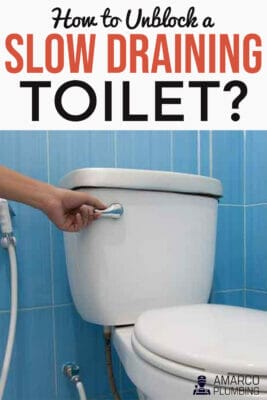Disclaimer: This post may contain affiliate links, meaning we get a small commission if you make a purchase through our links, at no cost to you. For more information, please visit our Disclaimer Page.
A clogged toilet can be one heck of an issue, for more reasons than one. Whether you’re answering the call of nature at your friend’s house and suddenly facing the clogged toilet issue, or if your toilet is the afflicted one, one must rise to the task and resolve this crisis.
Luckily for us all, there is a number of potential ways to solve this issue. This text will deal with some of them.
Some may be familiar to you, while others may be new, but by the time you read this text, you’ll acquire several very neat tricks which will enable you to deal with even the most troublesome clogging problems.
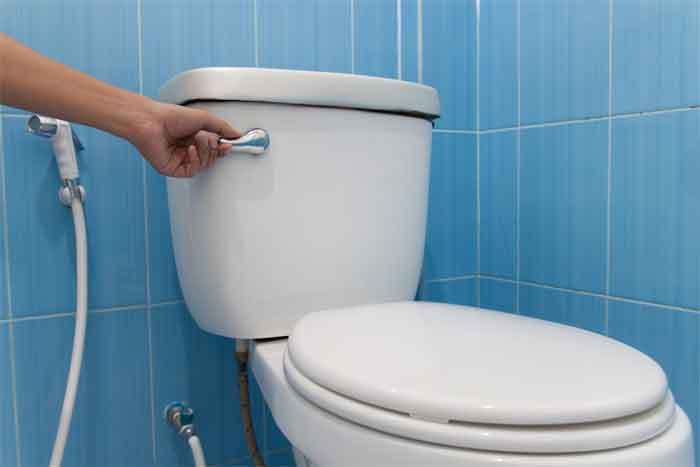
How to Unblock a Slow Draining Toilet?
1. The Hot Water and Liquid Soap Trick
The hot water can be pretty useful, especially if you’re at another person’s house. All you need to do is pour hot water into the toilet bowl.
The influx of hot water should do its magic and unclog the drain, but you may need some time to actually make the sync warm enough. Maximum heat is highly advised.
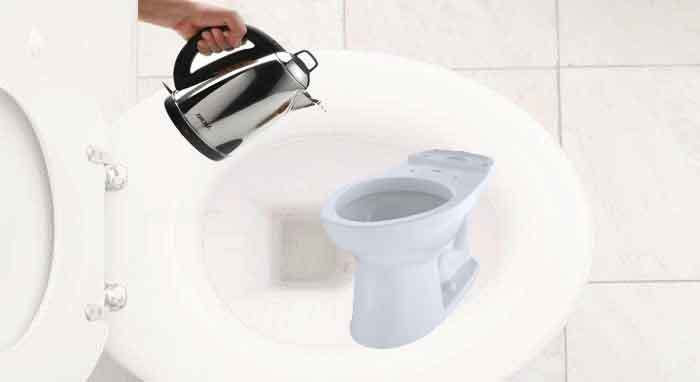
While you wait for the water to heat up, look for some liquid soap. Liquid soap (or any similar cleaning substance, such as shower gel or shampoo) can lubricate the clogged space within your toilet drain.
When the water is hot enough, pour the soap, then the water (a gallon or so is recommended), wait for a while, then repeat as many times as is needed.
2. The Plumbing Snake
Before we start talking about this method, a disclaimer is needed: the plumbing snake is not an actual snake, so worry not, it’s just a tool. That being said, this is how you use the plumbing snake to unclog your toilet drain.
This rather flexible tool is very efficient when it comes to unclogging, and if you don’t have it, do purchase it. It has a longer reach compared to that of the toilet cleaning wires, and it doesn’t scratch or damage your toilet bowl in any way.
You need to push it down the drain all the way to the clogged part. Once you reach the obstacle, you need to break it into smaller pieces in order to unclog the drain. Once you twist and prod your way through the obstacle, simply flush, and all should be well.
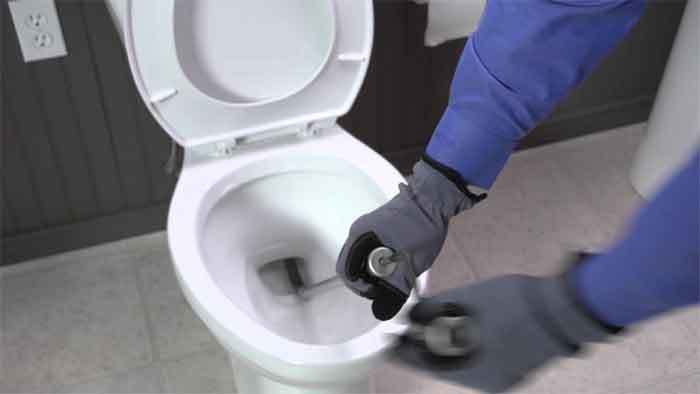
Bear I mind, however, that you may need to use the snake to unclog the drain from the opposite direction (you’ll need to disassemble your toilet seat for that) in case of a more troublesome obstacle.
Such an obstacle is usually the result of a child playing by flushing a toy. In case this method proves ineffective, call the plumber to take care of the problem for you.
3. The Wire Coat Hanger Trick
In case you don’t have the snake, a simple wire coat hanger can possibly do the job. Bear in mind, however, that the wire coat hanger does not have as long of a reach as the plumbing snake, so you should use it only if the clogging is not deep.
Take a wire hanger, unravel it, and then straighten it out to form a more or less flexible length of wire. The end of the wire you mean to use to unclog your drain should be covered with a rag. That way, you’ll avoid damaging your toilet bowl.
Once the rag is secured (some duct tape should do the trick), push it into the bowl, and push and prod the wire until you unclog the drain. And don’t forget to flush!
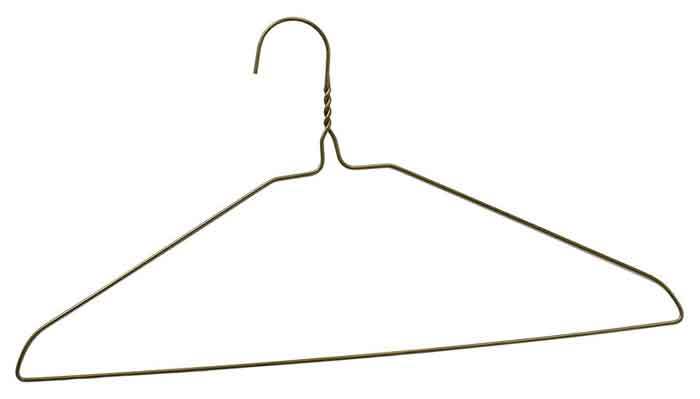
I may be a good idea, however, to wear some rubber gloves. You want to avoid being splashed while prodding the clogged area. And if you do not manage to reach the obstacle with the wire, you’ll need to use the plumbing snake.
4. Plunging
Plunging is often the go-to method of unclogging a slow-draining toilet. It takes a bit of effort, but the results are indisputable.
Firstly, you need to make sure your toilet will not overflow. You can do this by reaching into the toilet tank, and close the toilet flapper. Closing it will prevent the water from flowing into the bowl while you work. And don’t worry, the water in the tank is clean, so you can safely put your hand into it.
Just in case, use some old newspapers or rags and put them around the toilet seat in case of the water spilling all over the floor. Also, in case of bad smells, it would be wise to open the window and/or turn on the fan.
The use of rubber gloves is highly advised, especially if they reach your elbows. Toilet drains are not the cleanliest, so gloves are a must. If you can see the obstacle, try reaching for it and pulling it out.
In case that fails, use the plunger. Make sure to get the high-quality plungers – the ball-shaped plungers and the plungers with a flange are the best. The cheap, smaller plungers often won’t quite cut it.
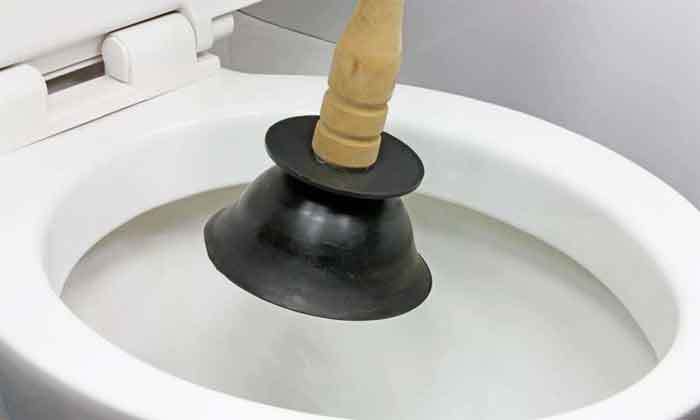
Position the plunger so it completely covers the drain hole, and make sure it’s submerged under the water for the sake of maximum efficiency.
Now all you need is a bit of hard work and patience while pumping the plunger. Usually, several cycles of pumping should be enough, but in case the obstacle is an overly hard object, you should call the plumber.
5. Enzyme Products
In cases when a particularly persistent obstacle is organic in nature, purchasing enzyme products is a smart idea.
You can purchase them in any home improvement stores. Such cleaning products are rich with enzymes which dissolve organic matter, an as a bonus, they are environment-friendly, and they don’t damage your pipes.
Every bottle of the said products has the instructions displayed. Pour the recommended amount of the product down the drain, and wait until the enzymes finish with dissolving the obstacle. Usually, it should all be finished during the night.
6. Chemical Drain Cleaners
Chemical drain cleaners are also some of the most common ways of cleaning your toilet drains. However, unlike enzyme products, they are pretty risky to use.
They are a health risk due to high levels of toxicity and can harm both you and your pets, and they have a corrosive effect on your pipes. If they contain chlorine, then they present a serious environmental risk as well.
Bear in mind, however, to use these types of cleaners only in case of organic obstacles. If the obstacle is harder than expected, you should either call a plumber or use the plumbing snake. Check here for a list of the best drain cleaners for toilet.
6. Use the Vacuum
It may seem silly, but rest assured – this method for unblocking a toilet drain is usually very effective. If your prodding didn’t work, using a wet/dry vacuum may just do the trick.
Take the water out of the bowl, and push the hose into the drain, but not too deep. Take some rags or an old towel and put it around the entrance to the drain. That way you’ll create a seal around the hose.
Use one hand to press the rags, and then turn the vacuum cleaner on. With a bit of patience and luck, the vacuum cleaner should break the obstacle and suck all the debris.
7. DIY: Drain Cleaning Fluid
Not all drain cleaners need to be bought – some you can make on your own, and the most famous one of the mixture of hot water, vinegar, and baking soda.
What you need to do is pour some hot water down the drain to loosen the obstacle a bit. After that, pour the baking soda down the drain, then the vinegar (1 cup of baking soda and 2 cups of vinegar should be enough), wait until the mixture dissolves the obstacle, then pour hot water down the drain.
Flush, then repeat until the problem is solved.
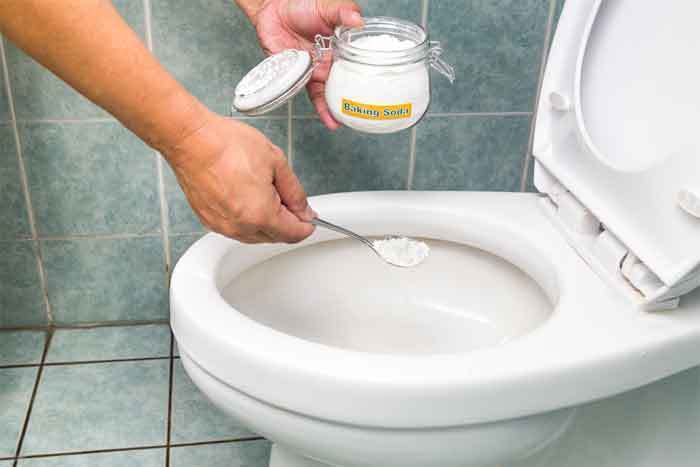
If the obstacle is organic, this method will work nicely, since baking soda can dissolve some organic substances. If the obstacle is inorganic, use some of the previously mentioned methods, or call the plumber.
Conclusion: How to Unblock a Slow Draining Toilet
The methods for unblocking a slow-draining toilet drain we have displayed here are some of the most common and foolproof ways of solving your drain issues.
However, they all have their good and bad sides. Much of their efficiency depends on the nature of the obstacle, for some methods work great against organic obstacles, but do not fare well against the inorganic ones.
In case you don’t feel like you’re not applying these methods properly, calling a plumber is never a wrong move. If you follow the instructions carefully, however, you’ll be able to eliminate or lessen any potential damage to your drains and to yourself, especially when it comes to using chemical drain cleaners.
With a little bit of care and precision, you’ll be able to solve almost any draining issue with relative ease.
